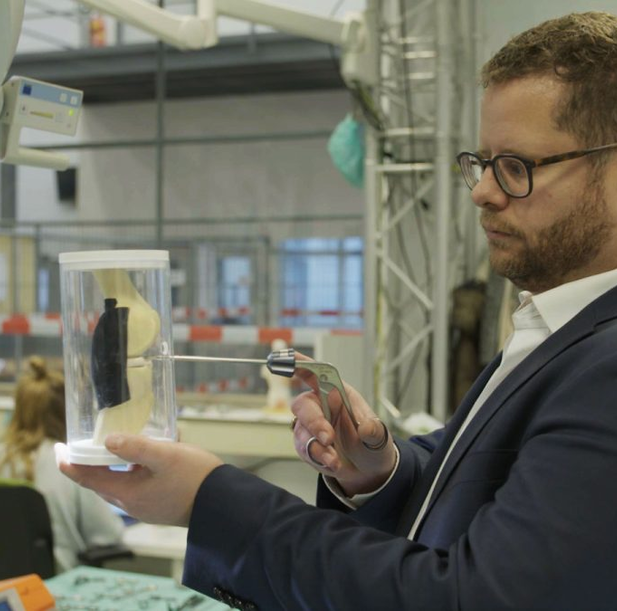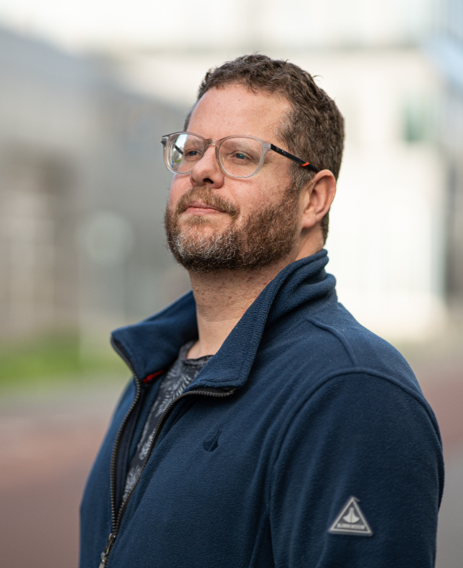Tim Horeman
What exactly do you do at the cutting edge of technology and healthcare?
Being a mechanical engineer, I very deliberately specialised in surgery. Metal and hard plastic that needs to interact with a soft, whimsical, non-standardised environment – this makes for an incredibly interesting set of requirements. It is also very rewarding. Even so, launching a new piece of technology in healthcare should not be the main motive. Technology should serve the purpose of providing improvement for both patient and surgeon.
A lot of the technology involved in surgery has been developed iteratively, with the result that there are very complex systems that are not well attuned to the task they need to fulfil within the field of surgery. I develop easier, more elegant solutions – for both implants as well as for (handheld and robotic) instruments. My goal in doing so is to develop more functional systems with fewer components. The context is exceedingly complex as it is; ideally you want to add as little complexity as possible. For example, you can sometimes replace a robot with a handle that is easy to steer. But your design must be smart enough to allow it to work in that context.
In any case, I don't find it interesting, for example, to develop an entirely new robotic arm, but rather to deploy off-the-shelf components as an alternative to the super-specialised robotic systems we know in surgery. In this respect, you must focus on modularity in order to be able to stack functionalities. And from sustainability and cost considerations, I make sure that, for example, only the instrument tip - that grips, fires or cuts - needs to be replaced and not the whole instrument. This means that my instruments can be used throughout the world. Accessibility, sustainability and lower costs form a close trinity.
I have known health ambassador David Abbink for a long time. We recently started collaborating directly within a research project, developing and validating a sustainable, sterilisable and modular surgical robotic platform.

What is your impression of the medical world?
Cutting disciplines, such as orthopaedics and surgery, are heavily involved in technology. Very early on, they made their own instruments, now they need specialists like me. Conversely, their clinical expertise and the context in which instruments are used are essential to the success of even the simplest design. The playing field has become more level, with a lot of mutual respect and joint publications. I have four technical and four clinical PhD candidates, including a very experienced surgeon who was so taken by the research that he wanted to do a PhD on it.
Do you have a top tip for engineers who work in the medical field, or who would like to do so?
Learn to speak the language and be sure you understand what everyone is getting out of the collaboration. While, of course, better care is very important for every healthcare professional, research publications may also be of great value in terms of for, say, getting a doctoral degree. And then there’s the satisfaction of working together towards a technical solution that truly impacts both the patient and the caregiver.
